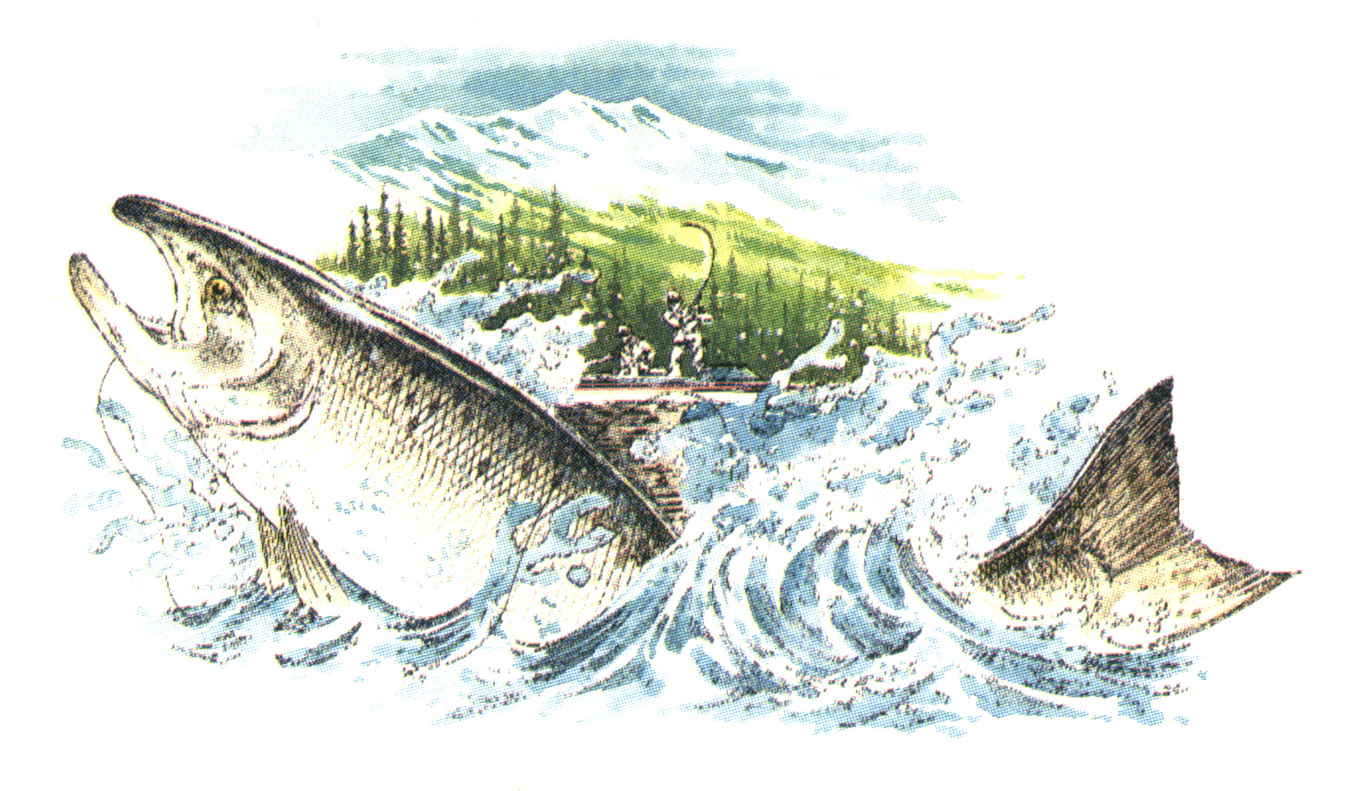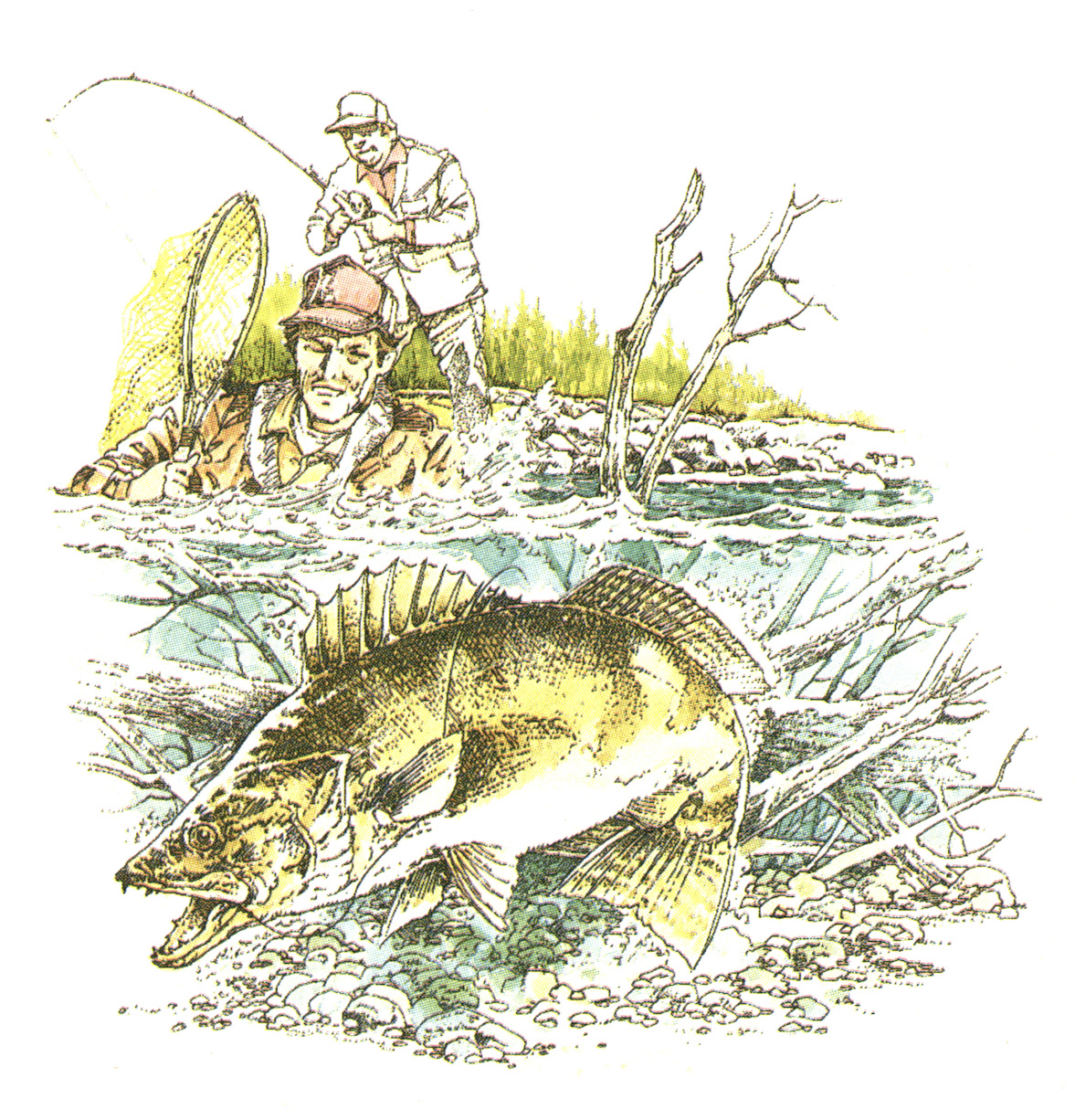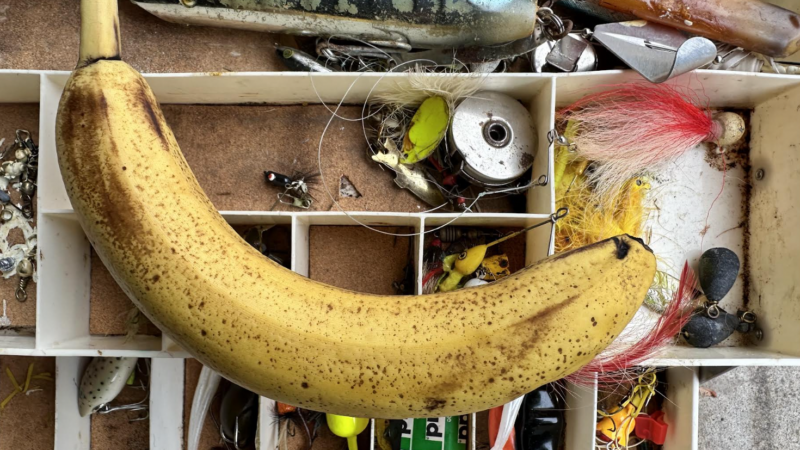7 Unbelievable True Fishing Stories of Record Catches, Wild Fights, and One Pissed-Off Shark
This story, “Strange But True Fish Stories,” appeared in the January 1993 issue of Outdoor Life
Every angler has a fish story. Some are so unbelievable that the story’s plausibility becomes suspect. A few have happy endings, though the majority conclude with the monster fish leaping to freedom. With either outcome, these stories provide adventure and drama to the often serene sport of angling. The following fish stories are both record and heart-breaking, and although each may seem a bit strange, they’re all true.
Revenge of the Mako
Australia is recognized by many anglers as a unique continent with some fantastic fishing, and subsequently some fantastic fish stories. Paul B. Kidd, author of the book The Greatest Fishing Stories Ever Told, relates an experience that happened to Australian Harry Finnegan.
Finnegan was fishing southeast of Sydney over The Peak, an underwater mountainlike structure that attracts all species of fish, including sharks. On this particular day, Finnegan was alone in his 30-foot wooden boat. He had caught some striped tuna, and he hitched one of the tuna on a o. 14/0 hook that was tied to a cable shark trace and 50-pound-test line. A balloon was attached to keep the bait about three yards beneath the surface.
After releasing the bait behind the boat, he started fishing a handline for snappers. Suddenly, the reel’s ratchet went off, signaling a pickup. Finnegan allowed the fish to take 80 to 100 yards of line before he slam-set the hook.
An enormous mako shark, one of the most terrifying ocean creatures, came hurtling out of the water, leaping 15 feet into the air, gnashing the tuna with its savage mouth. As the shark arched upward, its huge body scissored sideways while its tail ripped the air.
When the predator’s 600 to 700-pound bulk hit the water, it landed on the line, instantly breaking free. Finnegan’s disappointment at losing this huge fish changed to curiosity when the shark’s fin started coming toward the boat. Fear replaced curiosity when the mammoth fish charged Finnegan’s craft.
“What’s this rotten mongrel going to do?” Finnegan asked himself.
The huge shark leaped into the air and landed right in the back of the boat. As it thrashed and crashed inside the craft, Finnegan did what any intelligent individual would do: He ran like the devil up to the fly bridge!
He watched in amazement as the crazed shark smashed supplies and flung buckets, rods, reels and tackle every which way. It ripped the bolts loose from the game chair and with a flick of its tail, sent the chair into the ocean. Knowing that something had to be done, Finnegan grabbed an old .303-British rifle and snapped off a half-dozen shots. He hit everything but the shark. Holes appeared in the boat’s engine and flooring, causing water to pour in so fast that the bilge pumps could not keep up. In the meantime, the shark had had enough fun; it flipped out of the boat.
Somehow the engine started, and Finnegan directed the sinking boat back to port. He looked on in horror as the huge mako slowly stalked the wounded vessel. Finnegan radioed shore to plead that he was in “diabolical trouble.” Fortunately, the police reached him before he sank. Only after they had secured lines to his boat and boarded his craft did the giant shark give up its thoughts of deadly revenge and swim away.
According to Paul B. Kidd, “These days [Finnegan] won’t even drink water with his scotch, let alone go out on it.”
Muskie Munch
The lake’s surface was smooth as glass. The late evening sun highlighted a beautiful Canadian landscape, creating an unforgettable setting. That September evening, anglers Mike Cookas and Len Hartman, a line-class muskie record-holder, had an experience they will never forget. And it had nothing to do with the picturesque scenery.
“I hooked a nice fish,” said Cookas. “After a fairly good fight, an 11-pound pike came into view. As it came to the surface, I noticed that the six-inch plug was sticking out of its mouth — straight up and down, much like a periscope. When the fish was about 10 to 15 feet from us, a giant muskie came between the boat and the northern and grabbed it. It hit with such a wallop that we could actually hear the muskie bite it. After snatching the northern off the surface, [the muskie] rolled like a whale and disappeared!”
Cookas, who is an experienced muskie fisherman, immediately opened the reel’s bail and released line. For 15 minutes, the goliath gnawed on the big pike. Both Hartman and Cookas knew that a world record was on the end of the 12-pound-test line.
All of a sudden the strain stopped, and Cookas reeled the pike to the surface. What happened to that big northern would make a barracuda wince. The mauled pike was so limp that it appeared to lack a backbone. Its big head was crushed. The bite marks were unbelievable! In fact, what Cookas thought was 81 the northern’s anal hole was a tooth puncture.
Just how big was the fish that got away? The teeth marks send the imagination spinning. The bites on the northern were 11 inches from the left side of the jaw to the right. For a comparison, consider the 3 5-pound muskie Cookas has mounted. Its mouth width was only 4 ½ inches. Len Hartman’s line-class record muskie, 67 pounds 15 ounces and 63 inches long, had a 9 ½ inch jaw spread.
For those skeptics who say that this is just another greatly exaggerated fish story, there is proof to the contrary. Besides plenty of pictures of the ravaged northern, the 3 6-inch pike is being mounted and will be displayed at Nielsens’ Flying Camp in Nester Falls, Ontario.
Why did the muskie drop the pike after chewing on it for 15 minutes? Cookas and Hartman surmise that the large plug, which stuck vertically out of the northern’s mouth, prevented the muskie from swallowing the fish whole.
Yes, Mike Cookas is still trying to hook that unforgettable fish. However, he wonders how big a plug he should use on a muskie that considers an 11-pound pike a snack.
Hitching a Ride
It’s my turn to tell a whopper. In 1954, my father and I went to Lake Erie and rented a 14-foot Lyman boat. We rowed about a mile from shore and lowered the anchor. The snelled hooks were baited with large night crawlers. The action was slow and we had caught only a couple of sheepshead. Then, as my father set down his steel True Temper rod and poured a cup of coffee, his pole started slowly bending toward the lake. He grabbed it just before it plunged into the water.
The 25-pound test braided line steadily revolved off the reel’s spool. While holding on with conviction, my father unsuccessfully tried to thumb the line. When the bottom of the reel’s spool was showing, I raised the anchor. Dad worked his way to the bow and fought to keep the last bit of line.
The boat started moving toward Canada! The monster from the deep was in no hurry as it continued its relentless course northward, towing us along. Occasionally, it would rise 10 feet, and rest before swimming again.
From the strength of the fish, we guessed it might rival the length of our boat. During the battle, Dad became convinced that it was a sturgeon. Records show that fish more than 300 pounds are commercially caught. Bigger sturgeon are rumored to break free of nets.
Two hours later and 3 ½ miles from land, a fateful decision had to be made. Without a motor, and with shore disappearing from sight, common sense told my father that he had to choose between the fish of a lifetime and safety. He did what any good father would do; he cut the line. His young son’s well-being came first. I truly believe that if I hadn’t been along, dad would have fought the fish all the way to Canada.
He said little as he rowed the 3 ½ miles back to shore. In fact, to this day we seldom talk about the fish that tried to drag us across Lake Erie. Of course, it’s not coincidental that my father’s favorite movie is The Old Man And The Sea.
The 37-Hour Salmon
For most record freshwater catches, the fight usually lasts less than an hour, often concluding in just a few minutes. However, our next story jumps to Alaska, where Bob Ploeger battled a giant king salmon for more than 1½ days.
“I had chartered a drift boat for my wife and myself,” said Ploeger. “This was the first time that I had fished Alaska. We started fishing at 6 a.m. My wife caught a Dolly Varden and a rainbow or two. I didn’t catch anything in the morning. Around noon my 6½-foot pole got a real hard snap. I set the hook immediately. The fish pulled hard and then settled into a hole in the river. It just sat there.
“At two o’clock, the fish took off downstream going wide open. The guide lifted the anchor and started rowing. When I saw the bottom of the reel’s spool, I asked if he could row faster. ‘I’m giving it all that I can!’ he replied.”
At this point, the boat was drifting past the downstream end of an island. Ploeger thumbed the reel hard and a miracle occurred. The fish stopped before the last bit of line disappeared. However, it went around the island. The line sizzled in the water as the huge king salmon moved upstream through the rapids.
Because the drift boat lacked a motor, the fishing party anchored and helplessly watched the line streak up river. At the hole above the rapids, the fish stopped. Whistling and motioning like crazy, Ploeger attracted the attention of another angler in a 16-foot johnboat. It had an outboard motor.

Ploeger climbed into the new boat, and they motored above the fish. Now, the powerful fish decided to circle the boat. Standing amidships in rough water while the fish spun around the craft three times, Bob Ploeger started getting dizzy. He sat down and somehow was able to keep the whirling fish from tangling his line. The circles kept getting smaller. Suddenly, the fish raced downstream. With Ploeger in hot pursuit, the salmon stopped 4½ miles later near a boat landing and campground.
At 4:30 p.m., the king salmon porpoised out of the water. It was massive! However, by now, the boat was almost out of gas. Fuel was passed from another boat to the one Ploeger was on. At 7 p.m., fishing guide Pat Cooper offered to let Ploeger fight the fish from his 20-foot boat. The weary angler accepted and entered his third boat of the day. The fish offered no hint of tiring. At 10 p.m., the salmon greyhounded out of the water. Again, all but its belly came into view. Cooper swore it was a new world record.
At 3 a.m., the fish still showed no signs of giving in, even though it had been hooked for 15 hours. Cooper decided the fish needed to be pushed to wear it down. They motored over it and put the pressure on. The water was only four to six feet deep. At times the fish stayed put, other times it grudgingly swam short distances.
Word of the marathon battle spread. Hundreds of people ringed the shoreline to witness the epic struggle. As Ploeger fought the fish, a newspaper reporter did an interview, while a radio station did live updates. The local TV station had a film crew shooting footage of the fight. At times, there were so many boaters gawking at the struggle, Ploeger feared that another boat’s prop might cut the line if the salmon ran again.
Angler and fish continued battling, neither willing to give an inch. Most men half Ploeger’s age (he was 63 years old at the time) would have given up. But not Ploeger. Darkness fell again, and the epic struggle continued. Finally, the TV crew turned their bright lights on to follow the fish’s movement.
It swam toward the far shore and rested in three to four feet of water. It was so close to the river bank that the excited shore spectators could see the fish and gasp at its huge size. Because the single hook was wearing a hole in the king’s mouth, Ploeger and Cooper decided to try to land it.
A four-foot wide hoop net was plunged into the water, and the salmon filled the net’s five foot deep mesh. (Gaffs are illegal where Ploeger was fishing.) Just when victory appeared at hand, fate reared its ugly head. The current caught the boat and jerked it around. All leverage was lost, and the rampaging fish was able to rip itself free of the confining net.
When asked how he felt about fighting a potential world record only to lose it at boat side, Ploeger said, “I am grateful to the Lord for the experience, even though I didn’t catch a world-record fish.” However, Ploeger’s 37-hour ordeal is now listed in The 1993 Guinness Book Of World Records for the longest freshwater fish battle.
Sparring With a Marlin
Greg DuBrule, a Connecticut saltwater charter captain, has a story that combines luck and skill with tremendous excitement.
“We decided to try catching some yellow fin and albacore (tuna] at 50 fathoms,” said DuBrule. “We had retied all our gear, but most was in the 30-pound-test class, much too light for a record fish. After we got all the rods out, I saw a marlin slide behind the boat. It was huge! Only half of the tail was sticking out of the water and this was 3 ½ feet tall. I started screaming to crank the light rods in. I wanted to get them in before [the fish] grabbed a light outfit.”
The marlin went from one lure to another trying to impale each with his bill. DuBrule was able to get heavier outfits into the water, but the fish kept going back to one rod, it’s 50-weight reel spooled with 80-pound-test monofilament line. The marlin finally grabbed the bait and the reel screamed as the monster smoked line off the spool. The reel only had about 450 yards of line on it, so DuBrule had to keel the boat over hard to chase the escaping fish.

“I kept the bow parallel to the line, and prayed that the fish wouldn’t go under the boat. If it did, the line would have been cut. I pushed the 3 00-hp Volvo engine so hard that its tongue was hanging out. My first mate was screaming, ‘We’re losing it! We’re losing it!’ With only 35 feet of line left the fish stopped.” However, the worst was not over. The fish then decided to do battle at the surface.
“It was an unbelievable fight!” DuBrule continued. “The fish exploded out of the water, savagely shaking its head. Sometimes it only exposed part of its body. Other times it tail-walked, only to reenter the water and greyhound six to eight times across the surface. We told everybody, ‘Don’t be disappointed if we lose [the fish] because it’s on light tackle.’ We felt like David fighting Goliath.”
While all this was going on, DuBrule was sweating like crazy. The skipper of the boat was like a master chess player, who had to anticipate his opponent’s every move.
The world chess champ couldn’t have done any better; after two hours and 25 minutes the fish was brought close to the boat. The flat ocean surface gave them the final edge they needed. The huge marlin was maneuvered next to the craft, and the fish’s 14 ½-foot frame was wrestled into the boat. The 940-pound monster marlin set a new Connecticut record.
The Walleye Wrangler
Fishermen are often perceived as a solitary bunch. However, most anglers usually have one or two fishing buddies whose friendship is so strong, they would go to great risk to help their partner land a trophy fish. Carl Skeens is such a person.
Skeens and friend Billy Ray were bank fishing the mouth of the Gauley River in West Virginia. Ray cast a five-inch minnow into the water. Almost immediately he had a pickup. He fed out line and after about five minutes, closed the reel’s bail and drove the barb home.
For more than 10 minutes the fish gave Ray all he could handle. When the fish began to tire, it used its huge bulk to stay on the opposite side of a barrier of tree limbs. The situation appeared hopeless. However, Ray’s fishing partner, Skeens, would not let his buddy lose the fish of a lifetime. So into the swirling water Skeens went. Battling the current, he fought to hold his balance, and the frigid February water numbed his body.

Deeper and deeper he went until the water was up to his chin. He did not abandon the chase. Watching the line’s entry into the water, Skeens located the huge walleye. Trying to overcome the chill now stiffening his body, he poised the net under the leviathan. With all his might, he hoisted the fish safely into the hoop’s mesh.
Billy Ray is rightfully credited with the new West Virginia and world-line class walleye record of 17.22 pounds and 33 inches. However, the team effort to capture this huge fish is a story not told in the record books.
Quick Hands, Big Fish
“I had my hands full!” is the phrase most often used by anglers when describing a battle with a lunker fish. For Larry Shaw, this literally was the case. In April 1990, Shaw and his wife were testing an outboard propeller on Ohio’s West Branch Reservoir. There in a cove, they saw a huge fish lurking near the surface. Shaw motored toward it, thinking it had to be a carp. However, closer inspection revealed a humongous muskie. Shaw cast toward it, and after several tosses the fish swirled and disappeared from view.
Still not believing that a muskie could get that big, Shaw left the bay. A half-hour later he returned to the cove where he first spotted the big muskellunge. The monster was back! Shaw turned on the electric trolling motor and headed toward the goliath. As he crept closer the muskie suddenly started swimming toward the bass boat. Shaw quickly put on a leather glove and plunged his arm into the water, grabbing the fish behind the gills. The fish started splashing and twisting. The huge thrashing muskie was more than Shaw could handle. He couldn’t lift it into the boat. He did all he could just to hold on. Fortunately, a nearby angler came over to help.
“My God, what a monster!” the stranger shouted as he neared the fish. Together they were able to wrestle the muskie into Shaw’s boat.
Read Next: ‘What Do I Do Here?’ Watch Angler Catch 19 Pounds of Bass on a Single Cast
Shaw motored back to the marina to weigh the fish, and the scale broke when the dial hit 50 pounds. The next day a suitable scale was found. The muskellunge weighed 53 ¾ pounds and measured 54 ¼ inches. Shaw kept the story quiet until confirming that the hand catch was legal. However, because it was not caught on a rod and reel the fish was not eligible for Ohio record consideration, despite the fact that it was the biggest muskie ever boated in Ohio.
When asked about his fish, which he had mounted, Shaw said, “I was at the right place at the right time, and I was fool enough to grab it.”
The post 7 Unbelievable True Fishing Stories of Record Catches, Wild Fights, and One Pissed-Off Shark appeared first on Outdoor Life.
Source: https://www.outdoorlife.com/fishing/unbelievable-true-fishing-stories/




